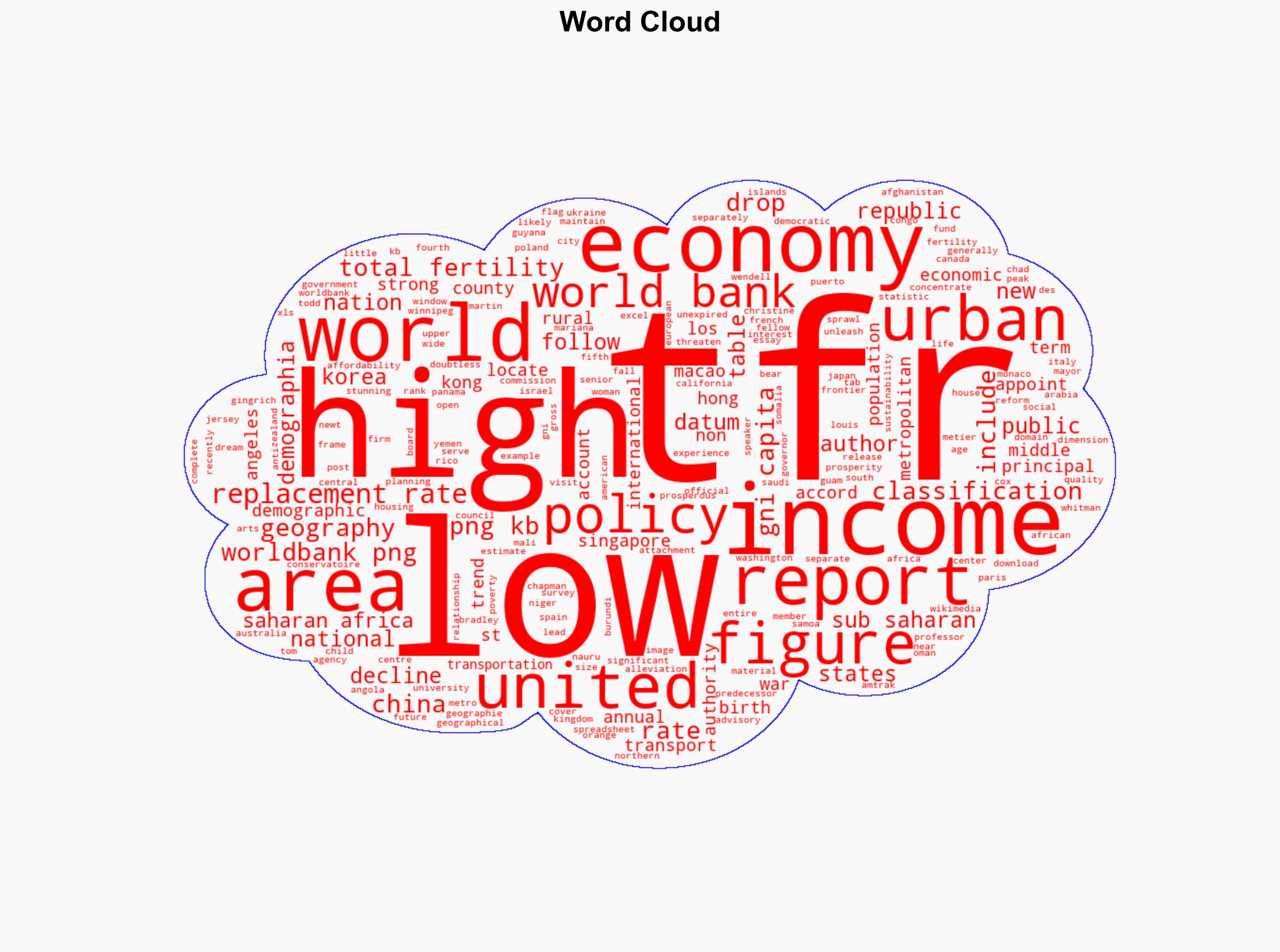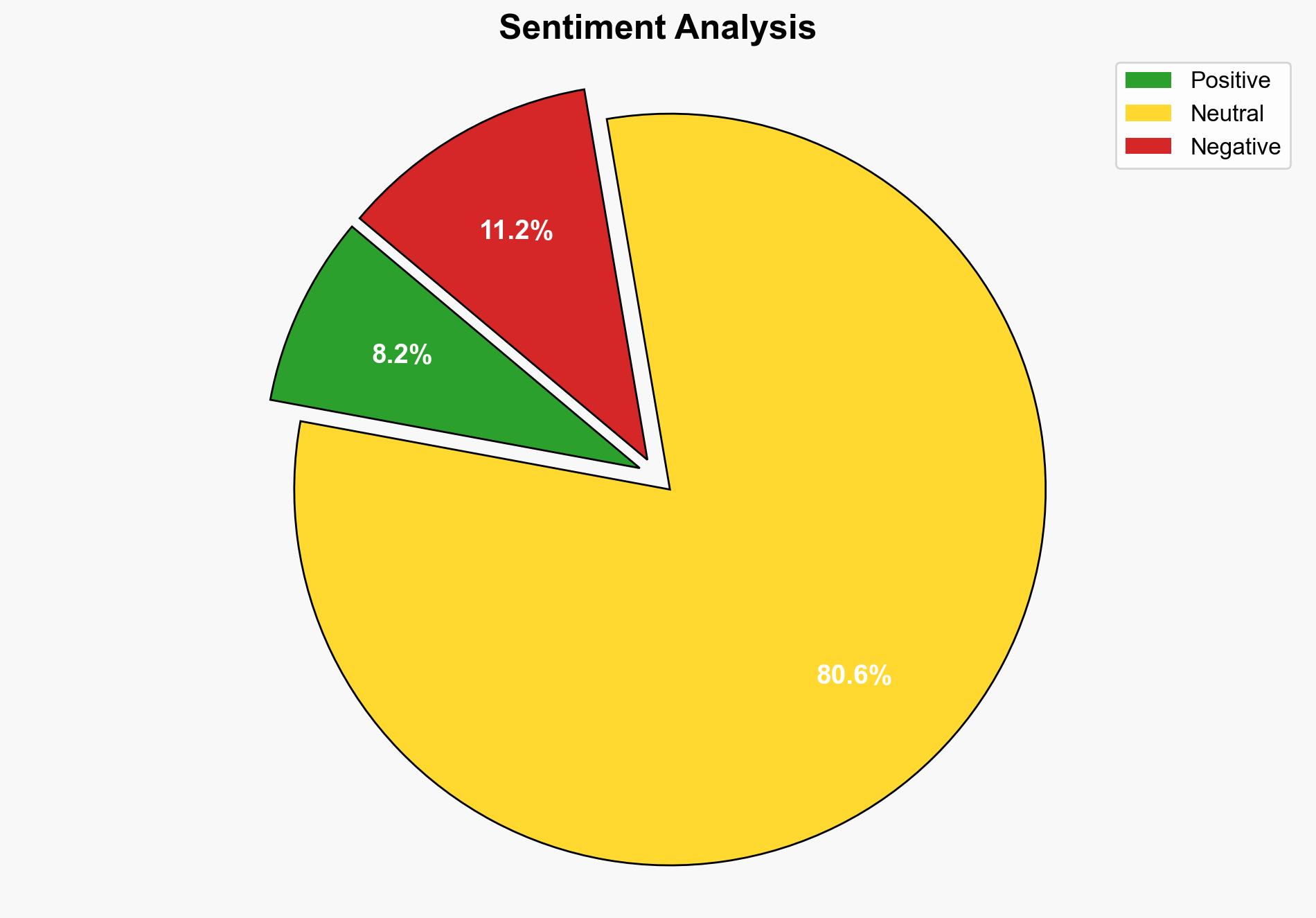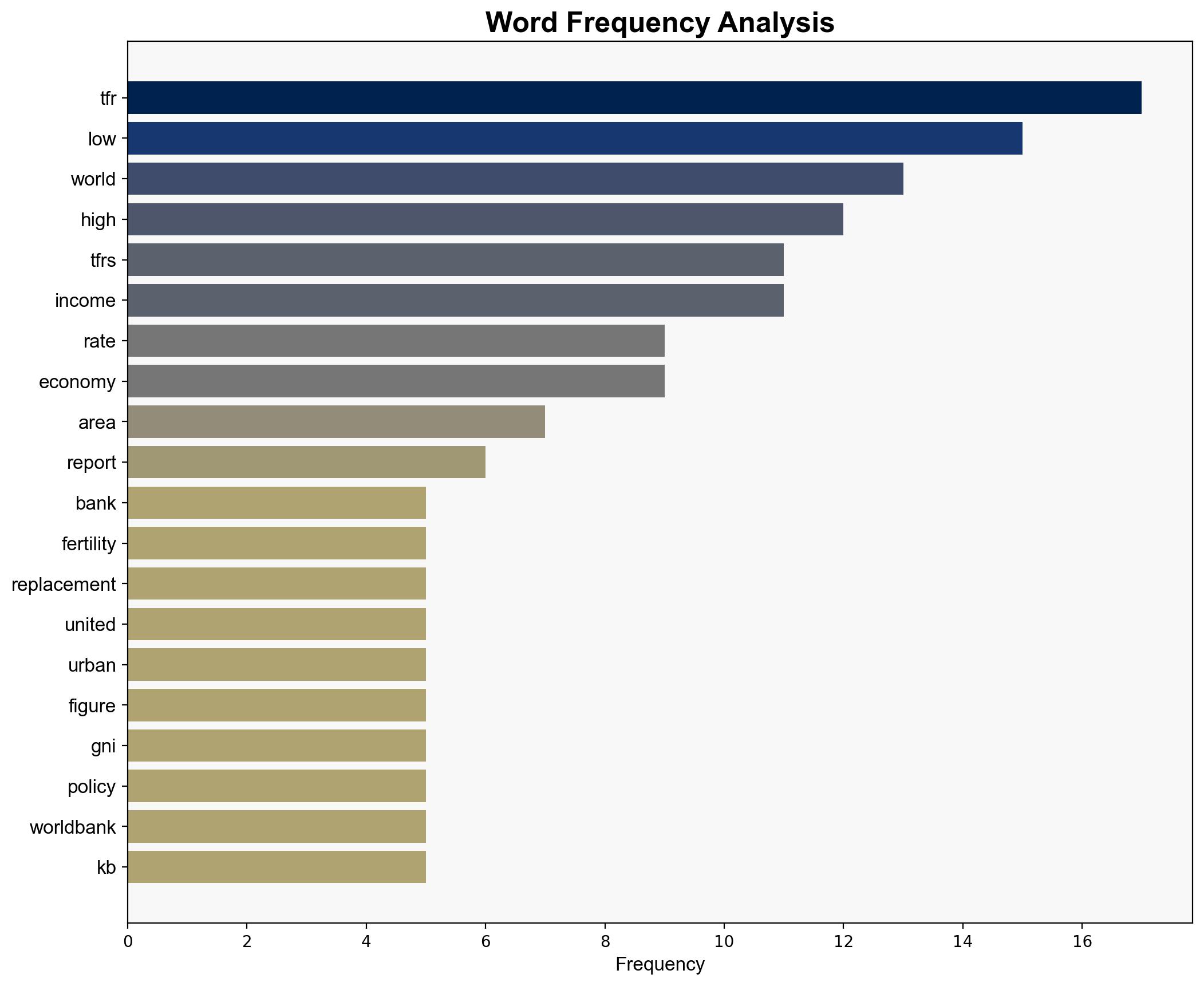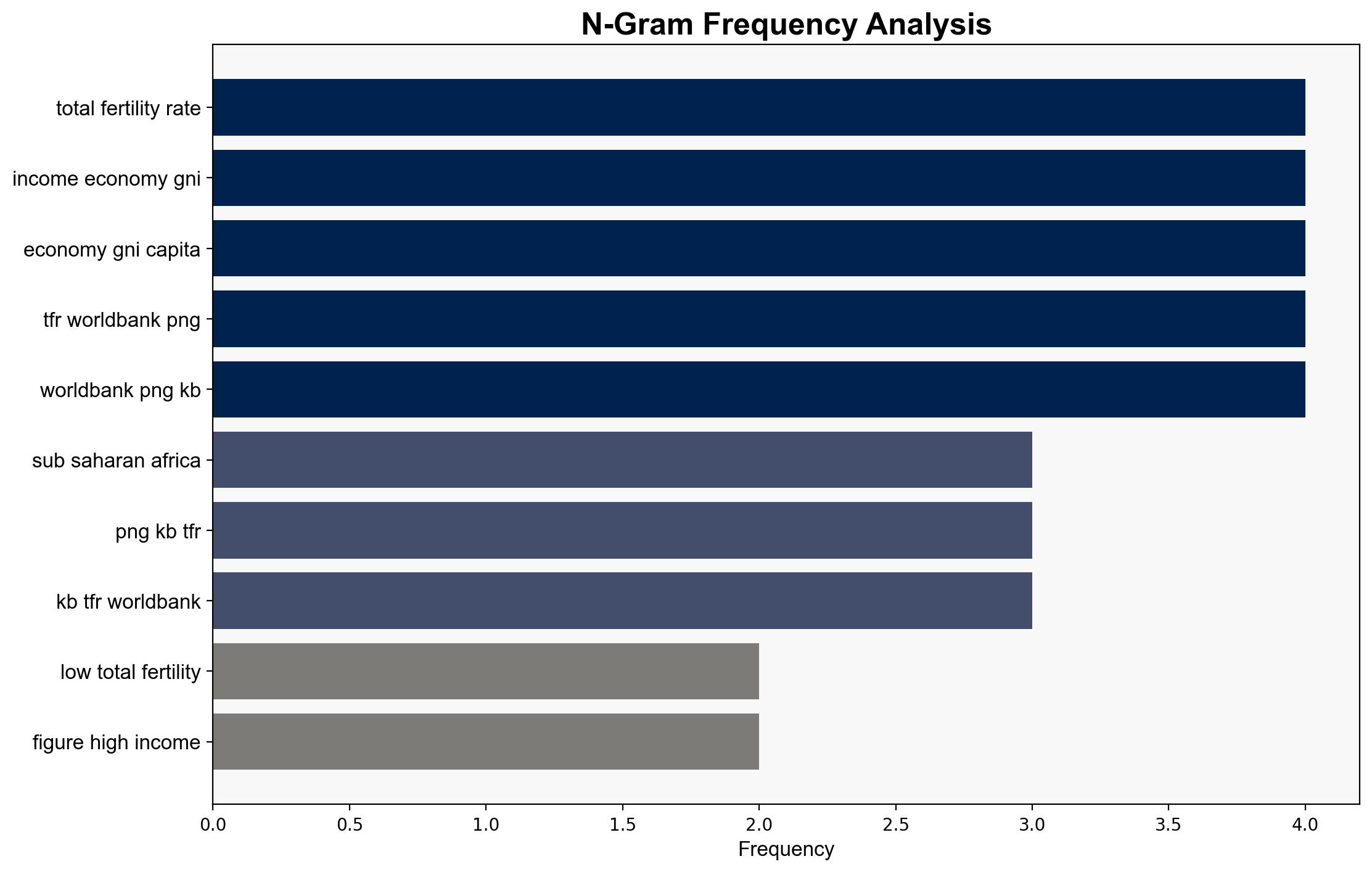Below Replacement Rate Fertility World-Wide Seems Imminent – Newgeography.com
Published on: 2025-09-06
Intelligence Report: Below Replacement Rate Fertility World-Wide Seems Imminent – Newgeography.com
1. BLUF (Bottom Line Up Front)
The most supported hypothesis is that global fertility rates are declining towards below replacement levels, driven by socio-economic factors and urbanization. Confidence Level: High. Recommended action includes monitoring demographic trends and preparing for potential socio-economic impacts such as labor shortages and increased dependency ratios.
2. Competing Hypotheses
1. **Hypothesis A**: Global fertility rates are declining due to increased urbanization, economic development, and changing social norms, leading to below replacement levels in many regions.
2. **Hypothesis B**: The observed decline in fertility rates is temporary and will stabilize or reverse due to policy interventions and cultural shifts promoting higher birth rates.
Using Bayesian Scenario Modeling, Hypothesis A is more supported due to consistent data trends across multiple high-income and urbanized regions, as well as historical patterns of fertility decline with economic development.
3. Key Assumptions and Red Flags
– **Assumptions**: Hypothesis A assumes that current socio-economic trends will continue without significant policy changes. Hypothesis B assumes that interventions will effectively counteract declining fertility trends.
– **Red Flags**: Potential underreporting or misclassification of fertility data in certain regions. Lack of consideration for cultural factors that might influence fertility rates differently.
4. Implications and Strategic Risks
Declining fertility rates could lead to labor shortages, increased healthcare costs, and economic stagnation in affected regions. Geopolitical tensions may arise as countries compete for skilled labor. Potential for increased migration pressures from high fertility regions to low fertility regions.
5. Recommendations and Outlook
- Monitor demographic trends and develop policies to support family growth, such as childcare support and parental leave.
- Encourage immigration policies to offset potential labor shortages.
- Scenario Projections:
- Best: Successful policy interventions stabilize fertility rates.
- Worst: Continued decline leads to severe economic and social challenges.
- Most Likely: Gradual decline with regional variations and moderate policy impact.
6. Key Individuals and Entities
Wendell Cox, associated with Demographia International and other policy organizations, provides analysis on demographic trends.
7. Thematic Tags
demographic trends, socio-economic impacts, global fertility, urbanization, policy intervention




